Info
Subfamily: Pooideae
Genus etymology: Hordeum = "barley" [Latin]
Species etymology: murinum = "wall" [Latin] refering to its habit of growing from wall; leporinum = "resembling a hare" [Latin] resembling a hare's tail
Photosynthetic type: C3 (cool season)
Nativity: naturalized - accidental
First recorded in Hawaiʻi: 1903
Map
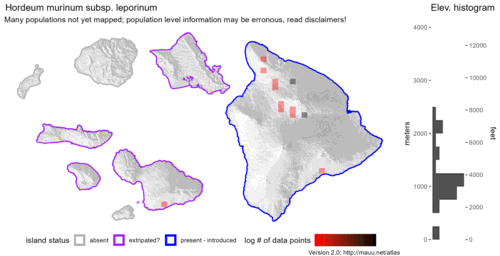
Inflorescence
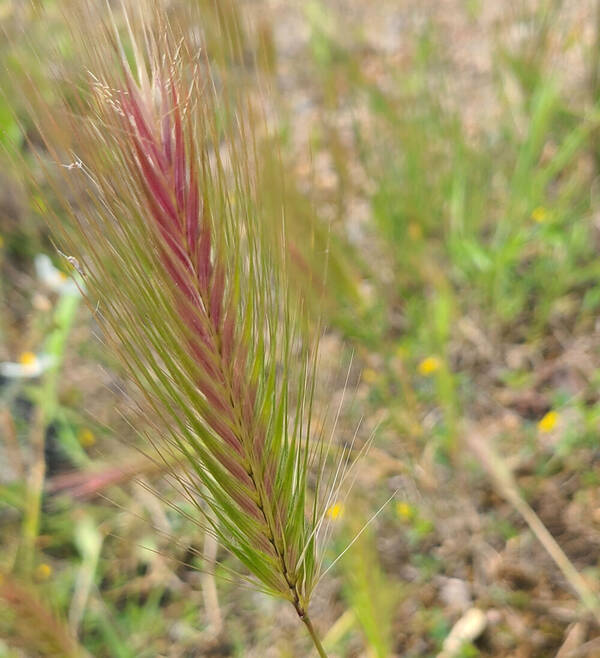 image credit: Anne-Hélène_Paradis
image credit: Anne-Hélène_Paradis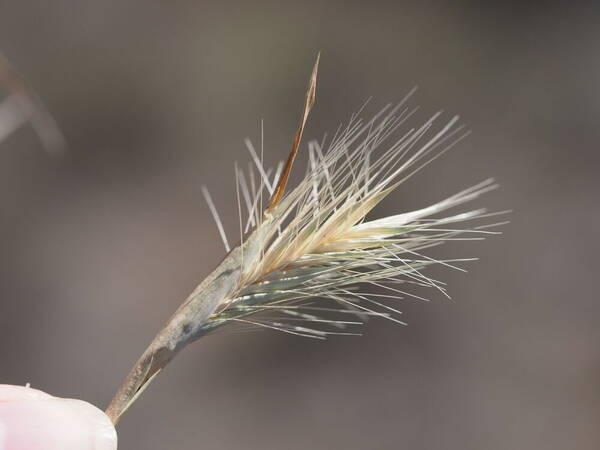
Habit
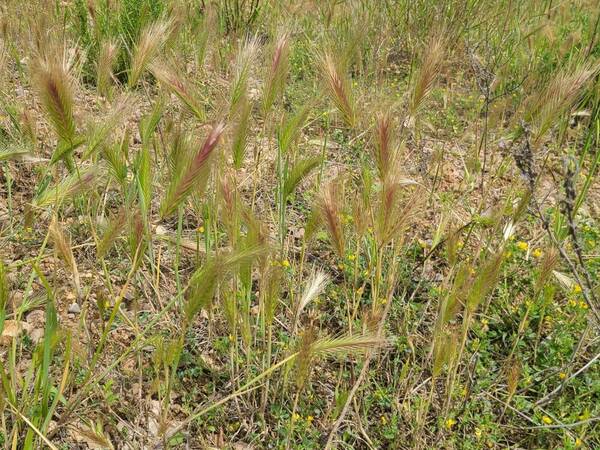 image credit: Anne-Hélène_Paradis
image credit: Anne-Hélène_ParadisSpikelets
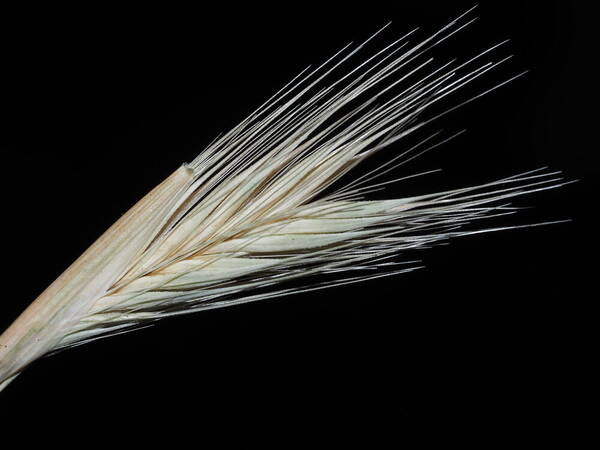
Description
Plants annual; loosely tufted. Culms to 110 cm, usually erect, sometimes almost prostrate; nodes glabrous. Lower sheaths often completely surrounding the culms, glabrous or somewhat pilose; ligules 1-4 mm; auricles to 8 mm, well developed even on the upper leaves; blades to 28 cm, usually flat, occasionally with involute margins, glabrous or sparsely pilose, sometimes scabrous. Spikes 3-8 cm long, 7-16 mm wide, pale green to distinctly reddish, especially the awns; rachises disarticulating at maturity. Central spikelets sessile, florets sessile or pedicellate, pedicels to 2 mm; glumes 11-25 mm long, 0.8-1.8 mm wide, flattened, margins usually distinctly ciliate; lemmas 8-14 mm long, to 2 mm wide, more or less smooth, awned, awns 20-40 mm; lodicules glabrous or with 1+ cilia; anthers 0.2-3.2 mm, gray to yellow, sometimes with purple spots. Lateral spikelets staminate, floret sessile; glumes flattened, margins ciliate; lemmas 8-15 mm, awned, awns 20-50 mm; paleas 8-15 mm; rachillas 2.5-6.5 mm, slender or gibbous, yellow. 2n = 14, 28, 42.
(Description source: Barkworth, M.E., Capels, K.M. & Long, S. (eds.) 1993. Flora of North America, north of Mexico. Volume 24. Magnoliophyta: Commelinidae (in part): Poaceae, Part 1. Oxford University Press, New York. 911 pp. http://floranorthamerica.org/Hordeum_murinum )
Pale green annuals; culms geniculate to erect, (1-)2-4(-6) dm tall. Sheaths glabrous or sometimes pilose; ligule 0.5-1 mm long, truncate, erose, ciliolate; blades flat, 2-5 mm wide, glabrous to pilose, auricles well developed, up to 3.5 mm long. Inflorescences composed of erect spikes 4-7(-10) cm long (excluding awns), + partially enclosed by the sheath, rachis readily disarticulating, the segments (1.5-)2-3 mm long; spikelets well-developed, the central spikelet sessile, rachilla joints 1-2 mm long, equalling or exceeding pedicels of lateral spikelets, the lateral spikelets usually staminate; glumes 15-22(-28) mm long, those of the central spikelet and the second glume of the lateral spikelet narrowly lanceolate, 3- nerved, the nerves scabrous, margins ciliate, the first glume of the lateral spikelet awn-like and somewhat longer than glumes of the central floret, scabrous; lemma of central spikelet (6-)7-9 mm long, glabrous, 5-nerved, the nerves faint, lemmas of lateral spikelets somewhat larger than those of central floret, 7-10 mm long, sterile, lemmas of all spikelets tapering into awns 18- 30 mm long; palea lanceolate, 11-12 mm long, 2-nerved, long-pilose and membranous between the nerves and at the margins, folded, evenly appressed long-pilose, apex obtuse to rounded. Caryopsis reddish brown, oblong, 3-4 cm long, apex densely reddish brown long-pubescent. [2n = 14, 28, 42.]
(Description source: O’Connor, P.J. 1990. Poaceae, pp. 1481–1604. In: Wagner W.L., Herbst D.R. & Sohmer S.H. (eds.)., Manual of the flowering plant of Hawaiʻi. Vol. 2. University of Hawaii Press & Bishop Museum Press, Honolulu )